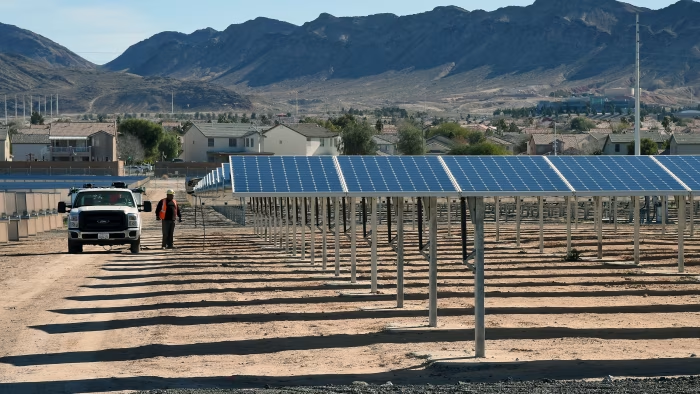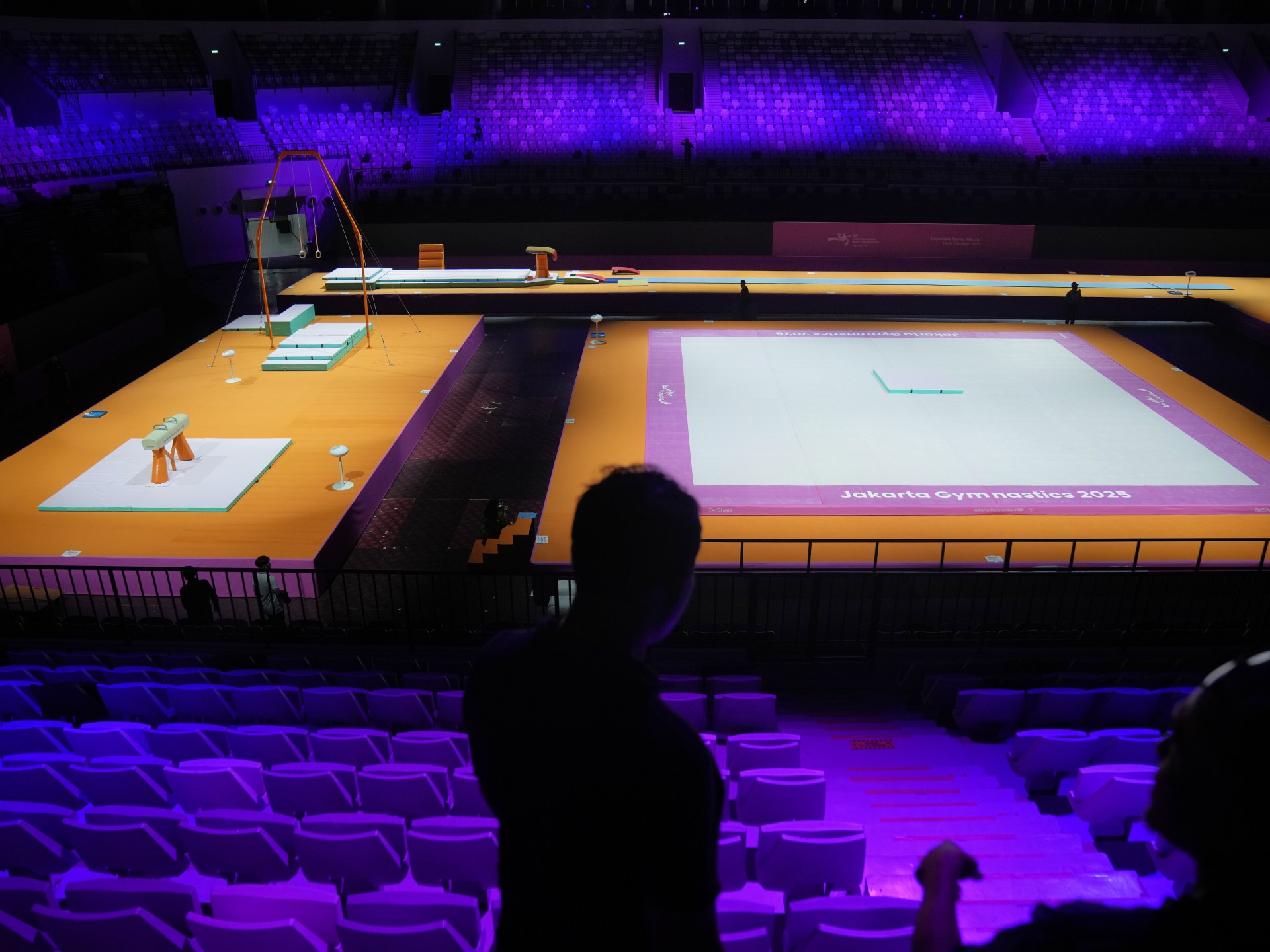Good morning. This week brought the two-year anniversary of the Hamas attack into Israel and the war in Gaza. The past 48 hours has seen a ceasefire deal many hope could bring a halt to the violence – though as one diplomat involved in the…
Author: admin
-

Single psilocybin dose provides long-lasting relief from depression
Psilocybin is a natural psychedelic compound found in certain mushrooms that affects mood and perception. In a new study, researchers found that a single dose of psilocybin quieted chronic pain and depression-like behavior within 24 hours.
The…
Continue Reading
-

Hackers Exploit LFI Flaw in File-Sharing Platforms
Attack Surface Management
,
Security Operations
…Continue Reading
-

AI–Enhanced SALT Score Improves Accuracy in Alopecia Areata Assessment
A novel artificial intelligence (AI) tool could improve the accuracy and objectivity of
alopecia areata severity and treatment efficacy, according to the authors of a proof-of-concept case report published inJAAD Case Reports .1The current standard for quantifying hair loss in alopecia areata is the Severity of Alopecia Tool (SALT) score, the authors explained. But in real-world clinical practice, the SALT score is rarely used due to its time-consuming nature and, notably, high interrater variability.2 Trichoscopy is another tool that allows for more detailed visualization of the hair and scalp to differentiate alopecia areata and monitor treatment progress, but it has limited availability in clinical settings because it requires specialized equipment and examiner expertise.
The new approach detailed in the care report leverages an AI-powered assessment tool to track and manage alopecia areata.1 The system automatically calculates the area of alopecia (AI-Area) to derive an AI-SALT score.
“This case demonstrates a proof-of-concept for tracking and managing [alopecia areata] using an AI-based assessment tool,” the authors wrote. “For this case of [alopecia areata], AI is used to calculate accurate areas of alopecia, and trichoscopy was used to detect early follicular regrowth, providing a faster, more comprehensive, and objective evaluation of disease progression and treatment response.”
In the case of a 47-year-old male receiving intralesional triamcinolone acetonide for a solitary alopecia areata patch, the AI tool provided a more accurate and sensitive assessment than traditional manual methods. Specifically, the AI-SALT Score captured incremental progress between early visits that the Manual-SALT Score failed to detect.
“Using the AI tool to assess this patient’s alopecia, demonstrates fast, easy-to-use AI-powered imaging via smartphone to precisely and objectively quantify alopecia for clinical evaluation,” the authors wrote. “Furthermore, percentage change of alopecia area provides more accurate and sensitive assessment than the manual SALT system demonstrated by the AI-SALT scores’ finer decimal-level precision.”
This enhanced sensitivity has a direct impact on patient adherence and overall management value. At the 8-week mark, the patient was considering discontinuing treatment due to a lack of noticeable improvement based on subjective observation. However, the AI tool’s objective data, which demonstrated clear progress, alongside trichoscopic images showing hair regrowth, motivated the patient to continue therapy. This demonstrates the tool’s ability to ensure sustained adherence when therapy is working and improve outcomes.
A crucial aspect of the case is that it shows the AI tool’s capacity to generate objective, standardized documentation, the authors noted. Insurers routinely require precise evidence of disease severity, including accurate SALT scores, to approve high-cost treatment coverage. By offering fast, easy-to-use, and highly precise quantification, this AI-based system can provide the verifiable metrics needed to satisfy coverage requirements, potentially reducing administrative burden and accelerating patient access to care.
“Today, AI tools are increasingly being used to assess skin disorders, and we are beginning to integrate these tools into our daily clinical practice,” the authors explained. “In this case, the integration of AI enabled more accurate monitoring and patient engagement, suggesting potential to improve care through personalized and informed management of [alopecia areata].”
The tool does have limitations, they noted, especially in cases of androgenetic alopecia, which does not have distinct patches of hair thinning. However, combining AI assessment with trichoscopy to quantify individual hairs or follicular units does enhance assessment, they explained. The AI-SALT score’s utility should also be validated in more severe or widespread alopecia and beyond single-patch cases, as well as in diverse populations.
“Here, we present a proof-of-concept for integrating AI tools in clinical settings to assess and monitor AA, demonstrating the potential to deliver precise and objective data that inform treatment decisions and patient engagement,” the authors concluded. “However, this is a proof-of-concept used on one patient, and further validation is necessary to ensure broader applicability.”
References
1. Chan E, Ramsay K, Tyli R, et al. AI-based alopecia assessment: a proof of concept for enhancing accuracy and objectivity in hair loss measurement. JAAD Case Rep. Published online October 7, 2025. doi:10.1016/j.jdcr.2025.09.023.
2. King BA, Senna MM, Ohyama M, et al. Defining severity in alopecia areata: current perspectives and a multidimensional framework. Dermatol Ther. 2022;12(4):825-834. doi:10.1007/s13555-022-00711-3
Continue Reading
-

MaxSun’s wild new liquid-cooled dual GPU card packs 48GB of memory and might just bend workstation logic to its will
- MaxSun design revives long-abandoned dual-GPU engineering with modern cooling
- Each slim card manages 48GB of memory and dual GPUs in tight spaces
- MaxSun Intel Arc Pro B60 48G Turbo Edition allows dense GPU stacking across full PCIe 5.0 bandwidth
Continue Reading
-
AstraZeneca announces historic agreement with US Government to lower the cost of medicines for American patients
AstraZeneca today announces a historic agreement with President Donald J. Trump’s administration to lower the cost of prescription medicines for American patients while preserving America’s cutting-edge biopharmaceutical innovation.
At a landmark event at the White House, AstraZeneca CEO Pascal Soriot joined President Trump and members of his Administration to confirm the Company voluntarily met all requests set out in the President’s July 31st letter. The Company agrees to a range of measures which will enable American patients to access medicines at prices that are equalized with those available in wealthy countries.
As part of the agreement, AstraZeneca will provide Direct-to-Consumer (DTC) sales to eligible patients with prescriptions for chronic diseases at a discount of up to 80% off list prices. AstraZeneca will participate in the TrumpRx.gov direct purchasing platform, which will allow patients to purchase medicines at a reduced cash price from AstraZeneca.
AstraZeneca has also reached an agreement with the US Department of Commerce to delay Section 232 tariffs for three years, enabling the Company to fully onshore medicines manufacturing so that all of its medicines sold in America are made in America. This will be achieved through the Company’s recently announced $50 billion investment in US medicines manufacturing and R&D over the next five years to help deliver $80 billion in Total Revenue by 2030, 50% of which is expected to be generated in the US.
Pascal Soriot, Chief Executive Officer, AstraZeneca, said: “Every year AstraZeneca treats millions of Americans living with cancer and chronic diseases and, as a result of today’s agreement, many patients will access life-changing medicines at lower prices. This new approach also helps safeguard America’s pioneering role as a global powerhouse in innovation and developing the next generation of medicines. It is now essential other wealthy countries step up their contribution to fund innovation.”
AstraZeneca’s commitment to the US and American patients is further reflected in the Company’s largest single investment in a manufacturing facility to date, where the Company broke ground yesterday in Virginia. This facility will support AstraZeneca’s weight management and metabolic portfolio and our leading antibody drug conjugate cancer pipeline. Additionally, a newly expanded manufacturing facility in Coppell, Texas, will officially open next week. Looking ahead, AstraZeneca will open a cell therapy manufacturing facility in Rockville, Maryland early next year and its second major R&D centre in Cambridge, Massachusetts will open in late 2026.
The US is AstraZeneca’s largest market by sales and is also home to 19 R&D, manufacturing and commercial sites. The Company’s US workforce exceeds more than 25,000 people and supports more than 100,000 jobs overall across the country. In 2025, AstraZeneca created approximately $20 billion of overall value to the American economy.
Notes
AstraZeneca’s agreement with US Government
This is the second agreement that a pharmaceutical company has made with the US Department of Health and Human Services to lower the cost of medicines for American patients in the past two weeks. Specific terms of this agreement remain confidential.AstraZeneca
AstraZeneca (LSE/STO/Nasdaq: AZN) is a global, science-led biopharmaceutical company that focuses on the discovery, development, and commercialization of prescription medicines in Oncology, Rare Diseases, and BioPharmaceuticals, including Cardiovascular, Renal & Metabolism, and Respiratory & Immunology. Based in Cambridge, UK, AstraZeneca’s innovative medicines are sold in more than 125 countries and used by millions of patients worldwide. Please visit www.astrazeneca-us.com and follow the Company on social media @AstraZeneca.
Media Inquiries
Fiona Cookson
+1 (212) 814-3923
US Media Mailbox: usmediateam@astrazeneca.com
Continue Reading
-

Live updates: 19 missing after huge blast at Tennessee explosives plant
Raw materials usually to blame when things with explosives go wrong – ballistics expertpublished at 21:16 BST
Freya Scott-Turner
Live reporterUsually when things go wrong with explosives, it’s with the
raw materials says Dr Chris…Continue Reading
-

US moves to cancel one of the world’s largest solar farms
Unlock the White House Watch newsletter for free
Your guide to what Trump’s second term means for Washington, business and the world
The US has moved to cancel what would have been the largest solar project in North America, as the Trump administration expands its attack on the embattled renewable energy industry.
Late on Thursday the Bureau of Land Management scrapped approval for Esmeralda 7, a 6.2 gigawatt project that could have powered nearly 2mn homes. It had begun the permitting process under the Biden administration.
The high-profile Nevada solar project backed by NextEra Energy, the largest renewable energy company in the US, is the latest to become a casualty of the Trump administration. The American president has called renewable energy projects a “scam”.
The Esmeralda 7 project consisted of seven solar farms and battery systems and was backed by power developers including Arevia Power, ConnectGen and Invenergy. It would have covered about 62,300 acres of federal lands in the Nevada desert north-west of Las Vegas.
Since January, Doug Burgum’s Department of the Interior has accelerated permitting for fossil fuel projects while tightening restrictions on solar and wind initiatives.
Large offshore wind projects have already been drawn into the administration’s crosshairs. In April Burgum ordered Equinor to halt construction activities on its 810 megawatt Empire offshore wind farm and issued a stop work order on Ørsted’s Revolution Wind.
While both projects were eventually allowed to proceed, industry backers say the uncertainty undermines US energy needs and investor confidence.
The crackdown on renewables comes as the country faces soaring power demand due to the proliferation of data centres to fuel the rise of artificial intelligence as well as the electrification of vehicles and home appliances.
NV Energy, the state’s largest utility, projects that power demand will be 34 per cent higher in 2035 compared with 2022.
“We remain deeply concerned that this administration continues to flout the law to the detriment of consumers, the grid and America’s economic competitiveness,” said Ben Norris, vice-president of regulatory affairs for the Solar Energy Industries Association.
“We need more power on the grid, fast, and the solar and storage industry is ready to provide it, but we need the administration to get serious about truly achieving American energy dominance.”
The Department of the Interior did not confirm that the project had been cancelled, but said it and the project developers had “agreed to change” approach and that they would have the option to “submit individual project proposals to . . . more effectively analyse potential impacts”.
NextEra said it “remain[s] committed to pursuing our project’s comprehensive environmental analysis by working closely with the Bureau of Land Management”.
Invenergy declined to comment.
Continue Reading
-

Frequent Dining Out Linked to Higher Colorectal Cancer Risk
Regularly eating meals away from home may carry more than just financial costs. A large cohort study of over 42,000 adults in China found that frequent dining out was significantly associated with an increased risk of
colorectal cancer .1 The…Continue Reading
-

Gymnastics governing body reacts to Indonesia’s worlds block on Israel team | Athletics News
Indonesia has denied visas to Israel athletes ahead of the upcoming world championships in the world’s most populous Muslim-majority nation.
Published On 10 Oct 2025
Gymnastics’ governing…
Continue Reading
